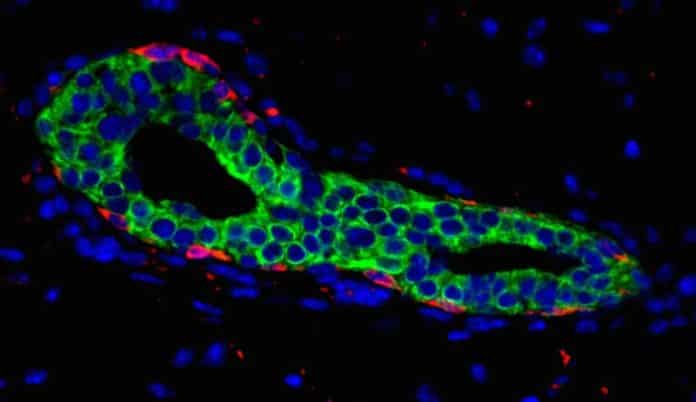Signalling Exchange that Could Possibly be Driving Breast Cancer
The body develops most tissue forms during fetal growth, at a mother’s uterus. Yet one single tissue develops following birth: the mammary gland. This milk-producing organ, a defining feature of mammals, is also the site of breast cancer, which affects approximately one in eight women in the USA over the span of their life.
“Learning more about the factors that keep mammary stem cells alive and healthy may provide insights into the development of breast cancer when such regulation goes awry,” said Yibin Kang, the Warner-Lambert/Parke-Davis Professor of Molecular Biology at Princeton University and an associate director of the Rutgers Cancer Institute of New Jersey, who led the international team that made the discovery. “Our study establishes macrophages as important components of the mammary stem cell niche,” he said.
Researchers from the University of Pennsylvania have now uncovered a brand new signalling pathway that mediates normal mammary gland development by controlling the mammary stem cell market, which wasn’t previously known.
The study suggests that the mammary gland stem cells communicate with macrophages with Delta-like-ligand 1 (Dll1), which is an element of the Notch signaling pathway. The group discovered that this molecular chatter is vital for
the existence of the mammary stem cells, which contributes to gland development.In the present study, investigators knocked from the Dll1 gene in mice also discovered that there’s a considerable delay in breast growth during puberty in addition to delayed breast growth during pregnancy and lactation.
What’s more, the amount of stem stem cells has been decreased both during mammary gland growth and while pregnant. Meanwhile, mice using the Dll1 receptor intact comprised adrenal glands using a higher capacity to regenerate and to differentiate into adult mammary cells when compared with the Dll1-knockout mice.
The team discovered that the binding of Dll1 into Notch2 and Notch3 receptors is essential for maintaining the amount of macrophages high from the mammary stem cell market, and significant for maintaining the bronchial cells inside their stem-cell state.
“We conclude that the signaling molecule Dll1, which is produced by the mammary stem cells, activates the signal in macrophages to sustain the mammary stem cells,” Kang said. “The survival and function of these mammary stem cells and the macrophages are dependent on each other and they communicate through these cellular messaging systems.”
“The ‘Notch-Wnt crosstalk’ that occurs at the mammary stem cell niche is crucial for the development of the mammary gland,” The first author and co-corresponding author on the study was Rumela Chakrabarti said, “and this crosstalk may have implications in breast cancer as both these signaling pathways are aberrantly increased in breast cancer.”






























